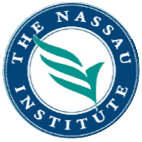Public schools have had a rough decade. Budget cuts have led to higher tuition, larger classes and fewer programs across the country. And with for-profit online schools making rapid gains during this same period, it’s worth asking if there might be a better way.
Free market solutions are usually part of the conversation when education reform is on the agenda. The National Center for Education Statistics notes that charter schools, which are publicly funded but given autonomy from government regulations, have tripled their enrollment over the last decade while enrollment at fully private high schools has remained about steady. College is another matter: 2.4 million students are enrolled in for-profit private schools. That represents a fivefold increase from 2001.
For-profit schools have earned a somewhat controversial reputation along with their rapid growth. A Department of Education report shows that students at for-profit colleges are more than twice as likely to default on their loans. Some consider this a clear sign that their investments aren’t producing good returns. The results however, could demonstrate that some for-profit schools are a bad fit for an education system that was designed for nonprofit institutions that work within a centuries-old framework or that those students who are signing up for these programs are somehow different from those signing up for traditional programs. It could very well be that many first generation college students are signing up for these classes and are not as well versed on how to use their education after graduation.
If we imagine a school system built entirely with a free market approach, we could get something very different. Instead of dictating the structure of education from start to finish, the government could regulate schools the way it does any other industry: By applying basic standards of quality and accurate advertising, and letting consumers decide the rest.
The most vibrant free market right now is the Internet, where nimble startups can become household names within a few years, and it makes sense that online education could be the basis for an up and coming market. Programmers have responded to the demand for knowledge about the evolving language of Web development by launching companies like Codecademy or Udacity to teach entrepreneurs how to build a better website. Another company, Skillshare, is trying out an even more ambitious idea by letting anyone arrange classes and offer their services as an instructor in whatever their field of expertise.
When we look at these companies, we can see the hallmarks of an education system that we might design if we had to build one from scratch today. It allows anyone to share whatever knowledge they have, giving consumers access to a range of hyper-specialized fields of learning. Education would not be limited to a strict academic format; a class could have whatever start date, length and price best meets consumer demand.
This sort of flexible marketplace could help students cope with the workforce they need to face. While economists differ about how much of the latest recession is the fault of a structural mismatch between workers and jobs, the growing demand for skilled labor and the likelihood that an employee will need to switch jobs in his or her career has led to an emphasis on job retraining initiatives dating back to the 1990s.
America’s school system has never relied entirely on the free market. Boston Latin School, the oldest school in the country, has used public funds ever since its founding in 1635. But the age of the public school system could be part of the problem, as our schools are structured based on a tradition that began when our economy was very different from the one graduates need to face today.
So far, traditional schools have responded with incremental changes to the same basic system. Most universities now offer online courses, for example, while night classes and community colleges provide an alternative to the traditional college route. But a truly free-market approach could respond much more quickly to shifts in what consumers are looking for, which is what free markets do best.

